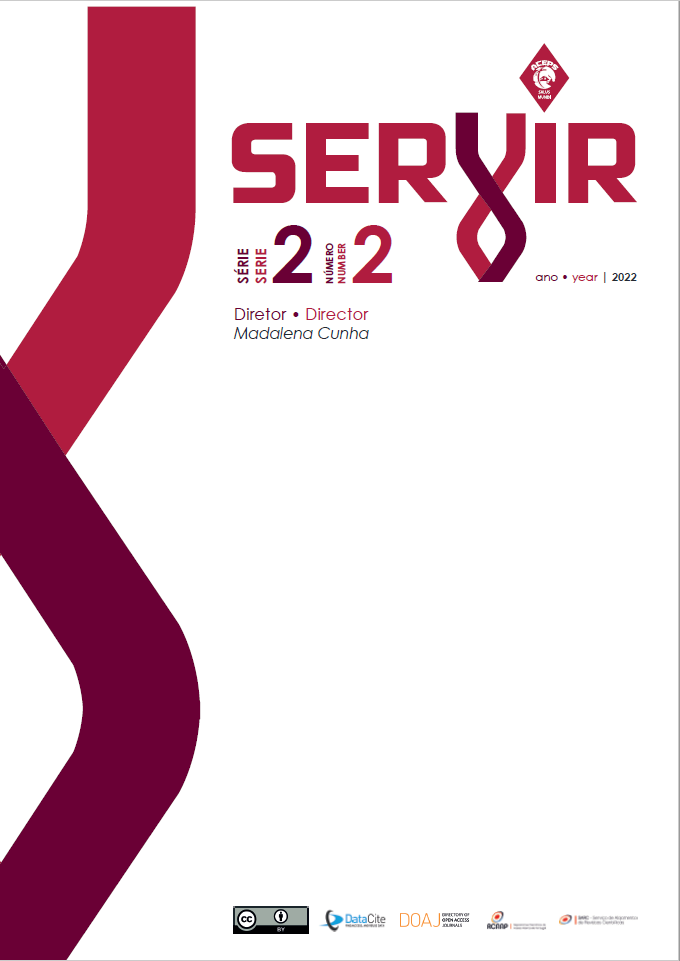Communication strategies that facilitate Holistic Nursing interventions administered to people undergoing mechanical ventilation
DOI:
https://doi.org/10.48492/servir0202.25880Keywords:
Communication, Holistic Nursing, Invasive Mechanical VentilationAbstract
Objective: Identify and describe communication strategies that facilitate holistic nursing interventions administered to people undergoing mechanical ventilation.
Methods: The present study consists of a Systematic Literature Review (SLR) carried out according to the methodology proposed by the Joanna Briggs Institute. Critical evaluation, data extraction and synthesis were performed by two independent reviewers.
Results: Three studies were included. Techniques commonly used to communicate with mechanically ventilated people, such as lip reading, gestures and nods, are markedly time-consuming and ineffective, tending to generate frustration. The heterogeneity of the studies reviewed provides a conceptual enrichment, however, did not allow for their meta-analysis to be carried out.
Conclusion: Communication frameworks are identified as highly useful instruments in the context under analysis due to their ease of implementation, effectiveness and low cost. We also emphasize the need for investment in this area of research since the gaps are evident and the damages inestimable.
Downloads
References
Briga S. A Comunicação Terapêutica Enfermeiro/Doente: Perspectivas de Doentes Oncológicos Entubados
Endotraquealmente [dissertação]. Instituto de Ciências Biomédicas de Abel Salazar da Universidade do Porto
[Internet]; 2010 [cited 2012 June 24]. Available from: http://repositorioaberto.up.pt/bitstream/10216/26914/2/Dissertao%20Mestrado%20Snia%20Briga.pdf
Cavaco, V. S. J., José, H. M. G., & Lourenço, I. M. R. (2013). Comunicar Com a pessoa Submetida a Ventilação Mecânica Invasiva: Que Estratégias? - Revisão Sistemática. Revista de enfermagem UFPE on line., Recife, 7(5), 4535–4543.
Elliot, Z. & Elliot, S. (2018). An overview of mechanical ventilation in the intensive care unit. Nursing Standard, 28(32), 41-49. https://doi.org/10.7748/ns.2018.e10710
Faria, P. (2019). Revisão Sistemática da Literatura: Contributo para um Novo Paradigma Investigativo. Metodologia e Procedimentos na área das Ciências da Educação. Santo Tirso: Whitebooks.
Farias, F. B. B., Vidal, L. L., Farias, R. A. R. & Jesus, A. C. P. de. (2013). Humanized care in the icu: challenges from the viewpoint of health professionals. Journal of Research Fundamental Care On Line. 5 (4), pp. 635-642
Glitus, J. Jeyalakshmi. & Sanap, M.(2018). Use of Communication Board for Mechanically Ventilated Patients. IOSR Journal of Nursing and Health Science, 2(1), 52-55.
Higgins, J., & Green, S. (2011). Cochrane Handbook for Systematic Reviews of Interventions Version 5.1.0. Retrieved from The Cochrane Collaborations: www.handbook.cochrane.org
Holden, K. (2017). No Longer Voiceless in the ICU: Speech-language pathologists and intensive care nurses help intubated patients communicate. The ASHA Leader, 22 (12), 40-41.
Hoorn, S., Elbers, P., Girbes, A. & Tuinman, P. (2016). Communicating with conscious and mechanically ventilated critically ill patients: a systematic review. CriticalCare, 1(20), 33. https://doi.org/10.1186/s13054-016-1483-2
Joanna Briggs Institute. (2014). Joanna Briggs Institute Reviewers’ Manual: 2014 edition. Adelaide, Australia: The Joanna Briggs Institute/ The University of Adelaide.
The Joanna Briggs Institute (2017). Critical Appraisal Tools. Retirado de http://joannabriggs.org/research/criticalappraisal-tools.html
Martinho, C. I. F., & Rodrigues, I. T. R. M. (2016). A comunicação dos doentes mecanicamente ventilados em unidades de cuidados intensivos. Revista Brasileira de Terapia Intensiva, 28, 132-140.
Moher, D., Liberati, A., Tetzlaff, J., Altman, D. &The PRISMA Group (2005). Preferred Reporting Items for Systematic Reviews and Meta-Analyses: The PRISMA Statement. PLoSMed., 6(7), e1000097. doi:10.1371/journal.pmed1000097.
Page, M. J., McKenzie, J. E., Bossuyt, P. M., Boutron, I., Hoffmann, T. C., Mulrow, C. D., Shamseer, L., Tetzlaff, J. M., Akl, E. A., Brennan, S. E., Chou, R., Glanville, J., Grimshaw, J. M., Hróbjartsson, A., Lalu, M. M., Li, T., Loder, E. W., Mayo-Wilson, E., McDonald, S., McGuinness, L. A., Stewart, L. A., Thomas, J., Tricco, A. C., Welch, V. A., Whiting, P., & Moher, D. (2021). The PRISMA 2020 statement: an updated guideline for reporting systematic reviews. Bmj, 372, n71. https://doi.org/10.1136/bmj.n71
Sequeira, C. (2016). Comunicação Clínica e Relação de Ajuda. Lisboa: Lidel.
Tufanaru, C., Munn, Z., Aromataris, E., Campbell, J., &Hopp, L. (2017). Chapter 1: JBI Systematic Reviews. In: Aromataris, E & Munn, Z. Joanna Briggs Institute Reviewer’s Manual (pp. -). Londres: The Joanna Briggs Institute.
Downloads
Published
How to Cite
Issue
Section
License
In order to promote the free circulation of knowledge, Servir is open access journal. All its content is available and protected under the Creative Commons license (CC BY 4.0).
The journal allows self-archiving in institutional repositories of all versions, which may become immediately available


